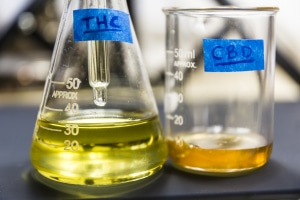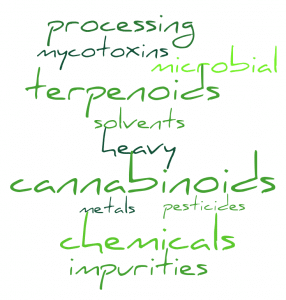Cannabis: Weed through the opportunities of this high growth market
Cannabis has experienced a global wave of decriminalization and outright legalization for both medicinal and recreational purposes over the past few years. The situation in the United States has been particularly complex, as individual states have taken different approaches, while the federal government continues to enforce drug laws everywhere. Regulations and protocols for growth, distribution, and particularly quality control have become increasingly stringent. Our newly published SDi report, Pot of Gold — Opportunities for Analytical Instruments for Cannabis Testing, analyzes how these regulations are spurring cannabis testing growth for all relevant categories of instrumentation.

But why is it important to test cannabis? Like any other crop, the cannabis plant can be exposed to pests and harmful 
There are two separate areas of interest when it comes to producing and testing cannabis products: recreational use and medicinal use. For recreational use, the psychoactive molecule tetrahydrocannabinol (THC) is of primary importance. Conversely, medical cannabis is typically characterized by higher levels of cannabidiol molecules (CBD) and lower levels of THC. CBD has a wide range of therapeutic effects including pain relief, anti-nausea, anti-anxiety, and reduced seizures. While potency is important for both, the purity of THC and CBD molecules can be what determines the primary use of the grown product.
While potency testing is currently the largest specific application, future regulation will drive growth for safety testing related to pesticide/solvent residue or potential heavy metal contamination. Although some places are still finalizing safety regulations, cannabis is usually required to be tested for cannabinoid potency, heavy metals, microbial impurities, mycotoxins, residual pesticides, residual solvents and processing chemicals, and sometimes terpenoids.
There are 11 specific techniques or instruments that are used to test for these various measurements of purity and safety. Our report Pot of Gold — Opportunities for Analytical Instruments for Cannabis Testing covers the market by product type, market segment, and region for each of the following:
- Gas Chromatography (GC)
- High Performance Liquid Chromatography (HPLC)
- Supercritical Fluid Chromatography (SFC)
- Thin-Layer Chromatography (TLC)
- GC/MS
- LC/MS
- Inductively coupled plasma-optical emission spectroscopy (ICP-OES)
- Inductively coupled plasma/mass spectrometry (ICP/MS)
- X-ray fluorescence spectroscopy (XRF)
- Quantitative polymerase chain reaction (qPCR)
- Sample Preparation and Extraction
Total market demand for all of these techniques is estimated at about $500 million dollars for 2017, and is expected to grow quickly over the next five years. Across all technology segments we found that instrument consumables represent about a third of the total market, and as testing volume increases demand growth for those products will be even higher than that for either initial systems or service contracts.
The primary instrumental technique used in cannabis testing is chromatography — often coupled with mass spectrometry, spectroscopy, PCR, and a number of supporting sample preparation techniques. Though multiple instruments can be used to distinguish compounds, there are “go to” instruments to detect particular elements that can aid in workflow efficiency.
For example, as outlined in a recent Instrument Business Outlook article, cannabinoid analysis can be performed on a HPLC system with a UV detector, and the technique doesn’t require a high-level chemist. For heavy metals like lead, mercury, cadmium and arsenic, an ICP-MS system can be used, due to its combined analysis speed and sensitivity. Mycotoxins and aflatoxins analysis can be achieved through HPLC or LC-MS(/MS). LC-MS/MS is usually used for pesticides analysis. In the future, GC-MS/MS may be needed for certain compounds as testing requirements continue to evolve in different governments around the globe.
Compared to other application markets in the analytical instrument industry, the cannabis testing market is much more focused in Canada, the US and Europe. Although demand in other regions of the world remains limited, broad legalization efforts, such as the recent one in Canada, have multiplied the need for services and products almost overnight. Pot of Gold — Opportunities for Analytical Instruments for Cannabis Testing helps executives and product managers identify areas of high potential growth, so suppliers can position themselves now to reap the financial rewards later.
Our next article in this series will take a glance at a few key drivers of the market itself and show how labs are using instruments for different applications of cannabis testing.
If you have any questions on the report’s contents, please visit our product page or download the report brochure here. Want to talk about the details or would like a quick walk-through of the report? Don’t hesitate to contact us at [email protected], give us a call at 703-778-3080 x19, or simply click here to schedule a 30-minute call with our report expert.





